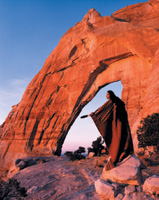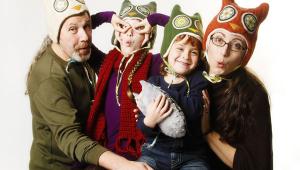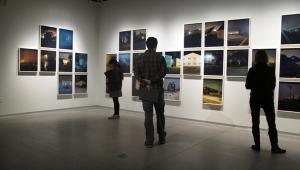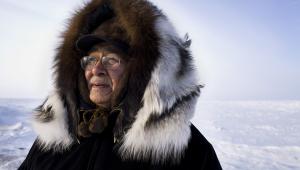Business Trends
Marketing Your Style
A New Business Model For Selling Portraits
The traditional portrait business has changed with new technology and new client needs and requests. Fads come and go, but the one thing all portrait photographers have to face is how to make a good profit--even a better profit--in today's new marketplace. The answer may rest in one of the most common business growth techniques--product diversification. Ultimately, anyone can take a portrait, even a very nice portrait, but what is there after selling your customer all of the wall prints and albums they need? David H. Davis has developed a solution. Based in Colorado, he has been a free-lancer, then a full-service photo studio owner, since 1974. Though Davis still teaches and publishes (he is a PPA Certified Professional and holds a Master of Photography degree), he was looking for a project that would allow him both creative freedoms and additional profit centers. |
|||
Shutterbug: You
are known for your "marriage" of a fine art style with a profitable,
commercial photography business--please explain how it applies to
your portrait work. |
|||
SB: What
lead you to expanding on your creative level of portrait work? |
|||
SB: Who are
your typical portrait clients and how do you market your work? |
|||
SB: What
has been your best marketing approach to get new business? |
|||
DHD: Facerock
Productions, LLC is the realization of a dream to build a company that
can produce and distribute a variety of photographic art. Native American
style and subject matter is the primary focus of our product line. Our
investors have pledged a portion of the profits to be used to mentor and
otherwise develop the talents of youth from the various reservations in
our region, and give them an outlet for their work. |
|||
SB: So you
are selling both to the end customer and through distributors? |
|||
It really is possible to be creative, have fun, and run a photography business. While you pursue your niche, study those things that interest you. Study subjects that will give you better communication and sales skills, then study anything and everything that will allow you to connect with the people you plan to meet. Building a photography business is an ongoing process that requires continuing preparation, patience, and persistence. Above all, you should develop you own unique vision. Use this vision to develop your own photographic style. Then use the business knowledge and experience that you have gained as a protégé or apprentice, and find a way to create image-based products that will create a residual income for your lifetime. Have fun! |























































